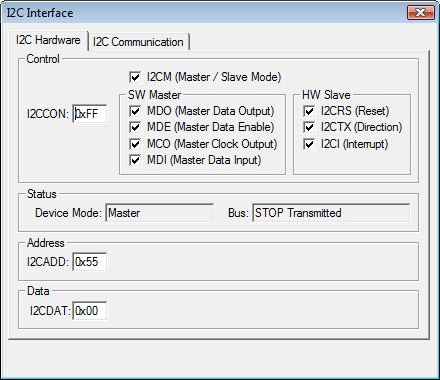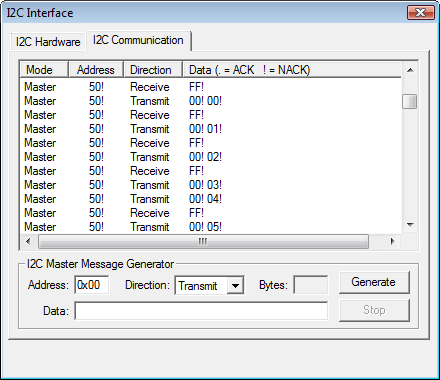|
||
| Products Download Events Support Videos | ||
Technical Support
On-Line Manuals
µVision User's Guide
I²C Simulation
To test software efficiently, it not sufficient to just simulate the I²C bus behaviour at bit-level. Instead, it must be possible to simulate the I²C Bus communication also.
µVision provides:
- I²C Bus Dialog pages to review I²C bus activities and data communication.
- Virtual simulation registers (VTREG) that to review and enter data to the I²C bus.
- Debug functions you can create to simulate an I²C device that is connected to the microcontroller. In this way, you can simulate your complete application rather than just simulating a small piece of the bus communication.
I²C Bus Dialogs
µVision offers dialog pages that output status information of the I²C interface and list the I²C communication (similar to the CAN communication page see AN147).
I²C Hardware allows you to review and modify the I²C settings trough hardware registers and to show the current I²C interface status.

I²C Communication allows you to review the data communication on the I²C bus and to enter data directly on the I²C bus using the Message Generator.

- Mode: shows the Master or Slave mode of the I²C data frame.
- Address: is the I²C bus address used for the I²C data frame.
- Direction: shows either Transmit or Receive of the I²C data frame.
- Data: is the content of the I²C data frame.
Note
- Point (.) stands for an Acknowledge bit.
- Exclamation mark (!) stands for Not Acknowledge.
ProductsDevelopment Tools |
Hardware & Collateral |
Downloads |
Support |
Contact |
